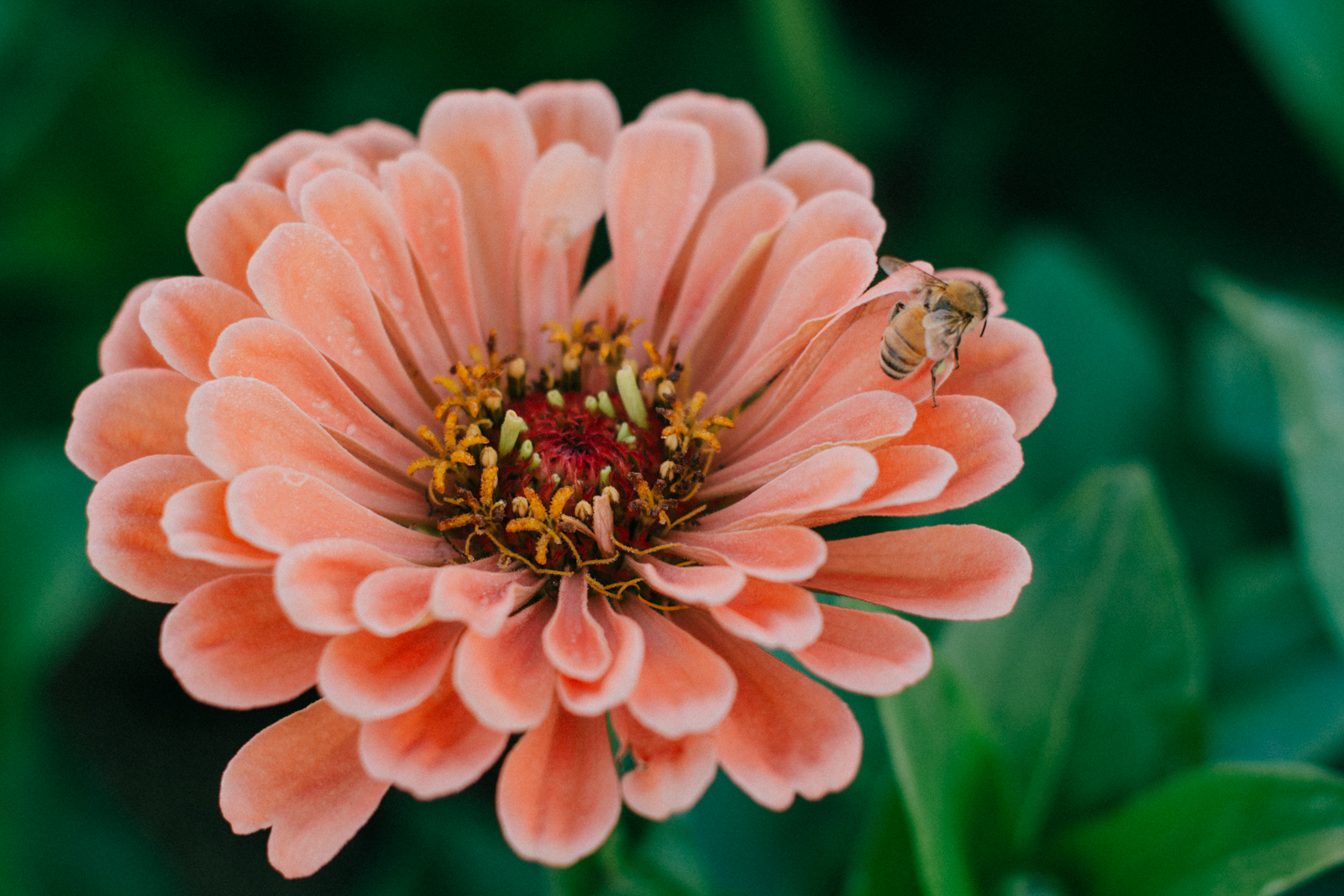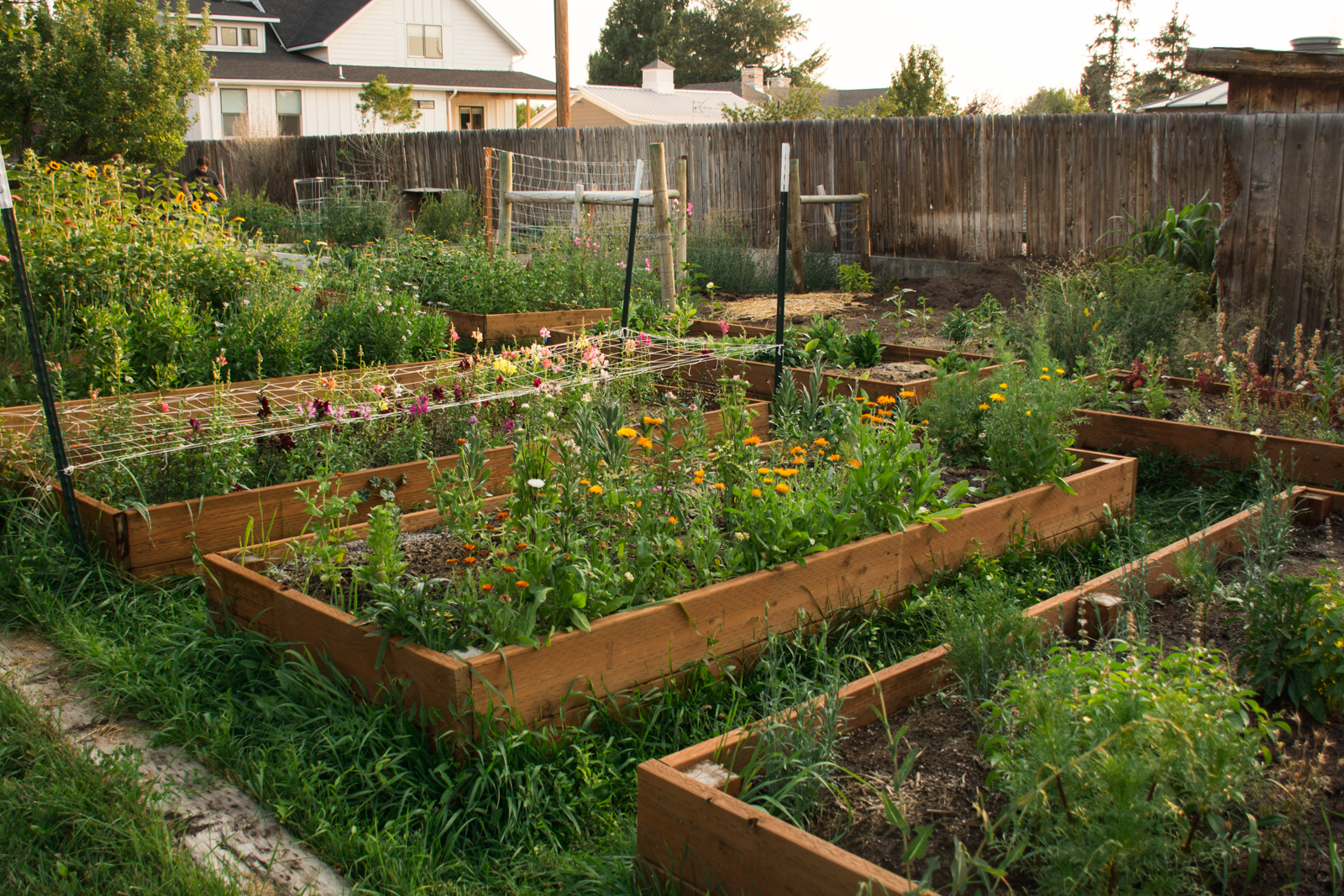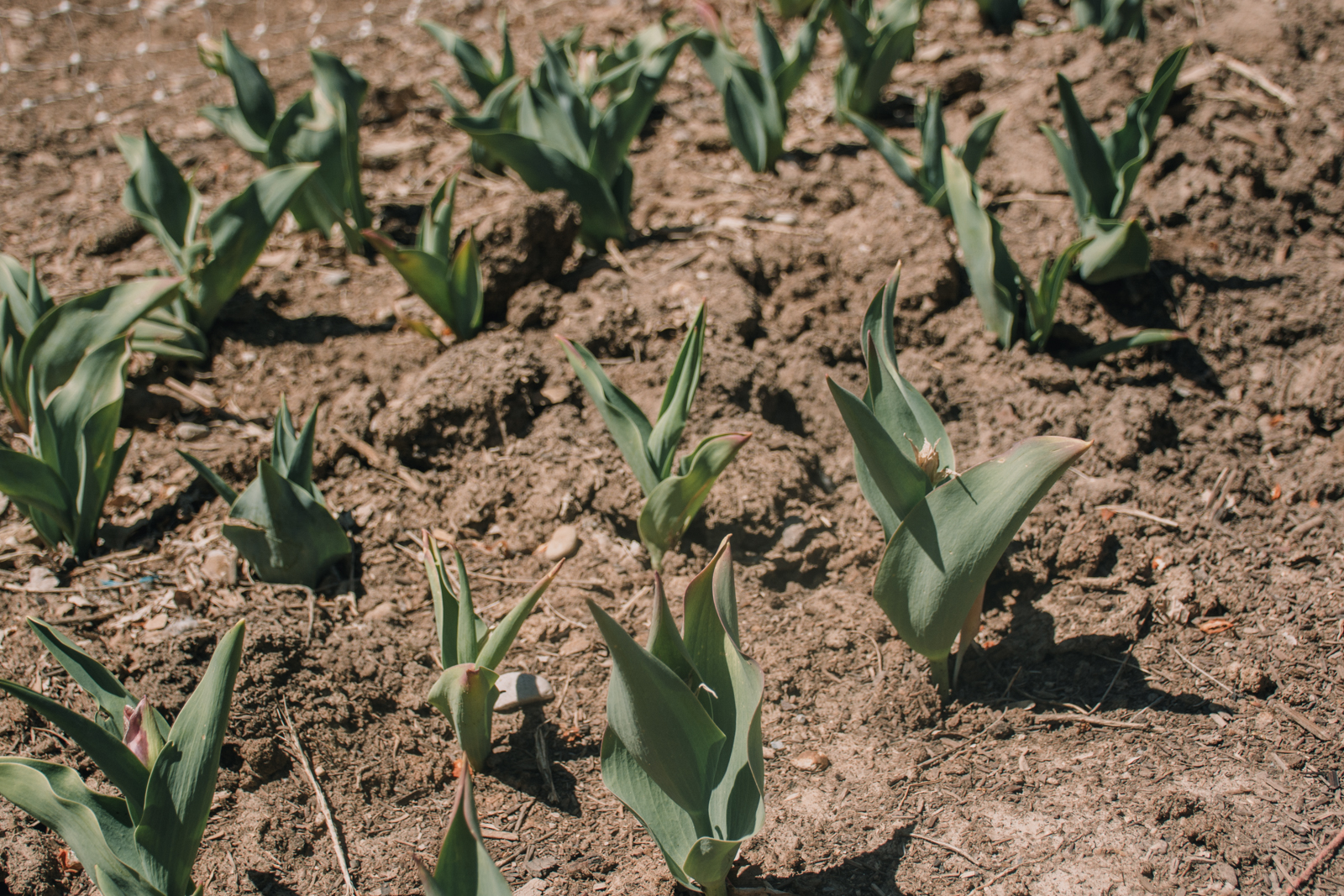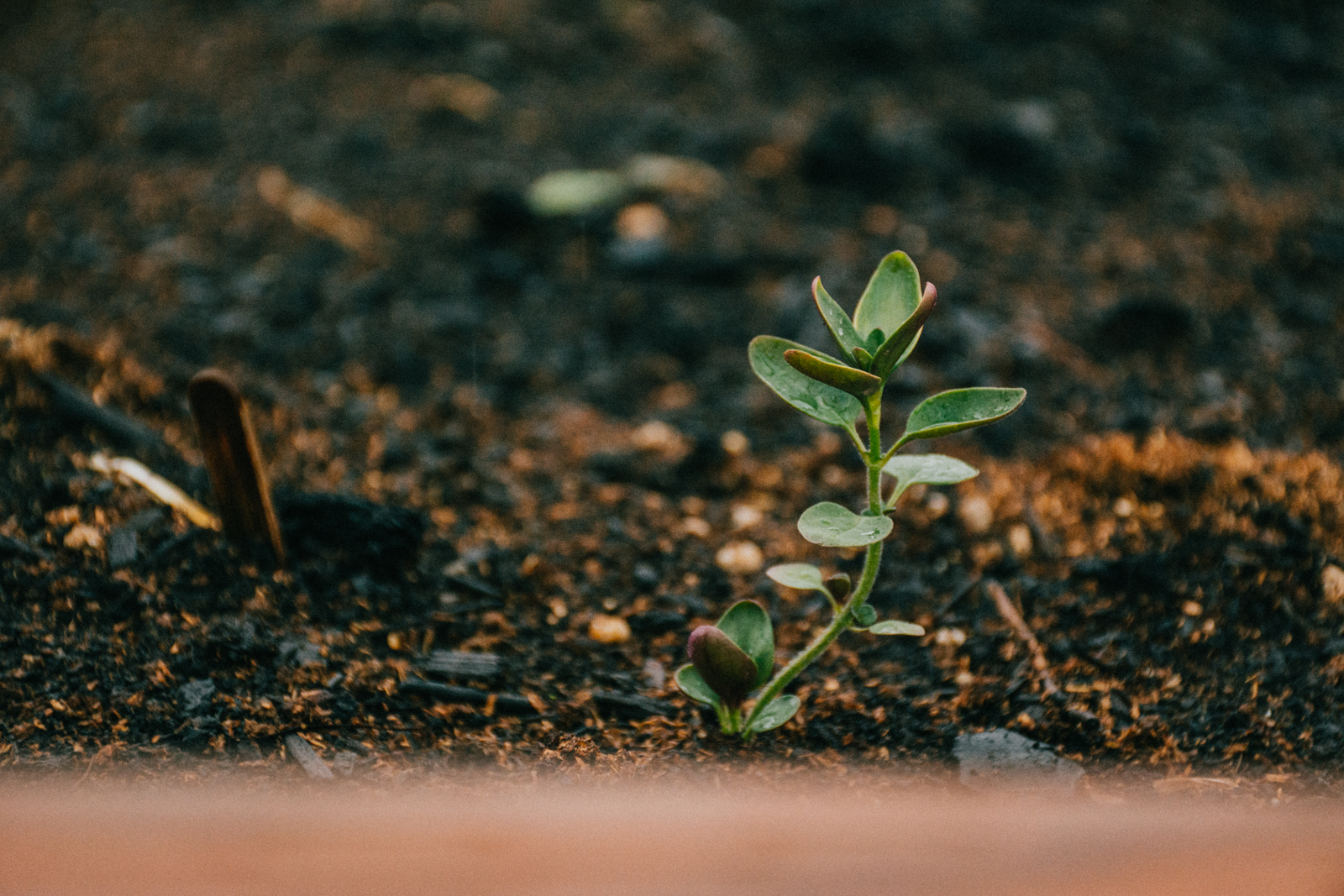
Having never done anything remotely like flower farming in my life before, I knew I was in for a steep learning curve. Despite perhaps hundreds of hours of research and planning, I still killed trays upon trays of seedlings (mostly after transplanting), had poor yields and/or stem lengths from several crops, and had stressful weeks (and weeks) of not enough flowers.
On the other hand, I also had some surprising successes — we sold out of our CSA bouquet subscriptions after just a couple days, I sold out of everything I had for the first several weeks when I finally opened up bouquet offerings to the public, and I even had a couple custom orders in the season. I also successfully grew more from seed than I ever had before in my life, including several new varieties I’d never personally grown before.
As I prepare to officially start my 2022 growing season (I’ll be sowing my first seeds inside this week!), I’ve been doing a lot of reflecting to make sure I don’t make the same mistakes twice.
Here are just ten of the things I’m hoping to do differently this year based on last year’s experience:
Plan for the June gap
This is definitely the one that’s been top of my mind ever since last June, when I just didn’t have enough flowers to fulfill subscriptions as planned during the month. While each CSA member still got one bouquet during the month, they were supposed to get two, and the one they did get was definitely the smallest bouquet of the season. I did make up for it later by making sure everyone got 3 bouquets in August and making sure all of those bouquets were fuller and bigger, but I still felt bad I didn’t come through during June.
During that excruciating month of waiting, I did a lot of informal research — I drove (or walked) up and down several streets all over the county and took note of what people had blooming in their yards during that time so that I could buy some perennials that would help take some of the pressure off. Thanks to those trips, I decided to order some special David Austin roses to help cover the June focal flowers, and I also bought some double shasta daisy plants as well.
But the real trick was going to be overwintering some hardy annuals (which I hadn’t had the chance to do before because of when we moved here), as well as starting some things earlier in the season since I didn’t start any seeds until March 1st last year. The whole group of flowers known as hardy annuals is the crux of my plan for next year, and I’m hoping that my experiments with overwintering rudbeckia, larkspur, nigella, dara, and some others will be the ticket to making sure I don’t ever repeat the June dry spell again. I also planted some biennials last year (foxglove, sweet William, and campanula), which are well-known to be great at filling the gap between the last of the spring bulbs and the first of the warm season annuals, so I’m keeping my fingers crossed that all my planning and overwintering will pay off in 2022.
Oh, and since we’re building a high tunnel this month, I’m also planning on using that so that we can grow ranunculus as another focal flower for June, PLUS I’m planting about 140 Asiatic lilies, at least some of which should bloom in June for sure.
Can you tell I’m REALLY making sure we don’t have a repeat of 2021 again?!

Take way more pictures
While I obviously had to take some pictures every week, such as for the weekly offerings we had available, and while I did try and at least take some general pictures of the farm and of my process a couple times a month, I really didn’t take that many pictures of everything last year. Additionally, I also realized that I don’t have a single picture of MYSELF with anything to do with the flower farm, other than a couple pictures on my phone of me at the farmer’s market!
The reasons for the lack of pictures boil down to two things: 1) I was literally so busy the majority of the season that it was super hard to find time to just go and take pictures, and whenever I did have time, I was too tired to feel creative enough to want to do it, and 2) I was a bit embarrassed that our flower farm didn’t look as “showy” and pristine as many other flower farms seem to — we got overrun with weeds by August when things were looking their prettiest, and since I wasn’t the best at ripping old things out that were done blooming or when I hadn’t had success with certain transplants, there were several bare gaps in the beds. We also were fairly good at staying on top of harvesting everything as soon as it came on, so there weren’t very many points when we actually HAD a lot of visible flowers out in the farm.
However, I’ve quickly realized that taking a ton of pictures is something I need to prioritize. There are several reasons, but the biggest one is for marketing purposes — since the vast majority of our business takes place over social media, I really need to be working on building up a following there and also frequently posting pictures so that people are more invested in our process.
Don’t offer free delivery
For our CSA subscriptions, I offered free delivery on every bouquet to anyone within a 10-mile radius, mostly just because I was nervous that no one would want to buy a subscription otherwise, especially since we were totally an unknown business and this was our first year flower farming. For customers who lived a bit further out, I charged a (very small) delivery fee of between $2.50 and $5 a bouquet, even though some of them lived nearly half an hour away from me, which translated to an hour or more of driving time every time I had a delivery out in those areas.
All that driving really added up, and when you factor out how much time it took and how much we spent in gas, we definitely lost money on those CSA subscriptions.
In the year ahead, I will still offer CSA subscriptions, but the “base price” will be for pick-up only, and if a customer wants each one delivered, the fee will be quite a bit higher than what I charged last year.
The fact is, if I want this to be a viable business that will actually make us some money, I have to make sure that I’m not devaluing my time or not counting other expenses (such as gas) into the cost.
“Days to maturity” is not a guarantee
There were so many things I grew last year that I’d never grown before, and since I didn’t know how else to figure out when they’d be ready, I just went by the “days to maturity” on the packet. While this can be a valid indicator of when you can expect blooms, it definitely is not fail-proof.
What I didn’t realize is that “days to maturity” is usually only taking into consideration if the plants are grown under ideal circumstances, and they don’t always count the days that the seedling spends indoors under grow lights — sometimes days to maturity is calculated from transplant. At any rate, just because something spent 65 days under grow lights doesn’t mean that you can then subtract 65 days from the days to maturity–it just doesn’t work like that, at least not in my experience.
So basically, my new rule of thumb is that for anything I start inside and then transplant out, I can only subtract about half of the amount of time inside off of the days to maturity, and the rest will have to be counted from outside. If I get things sooner than expected, great. But this way, I’m also not freaking out when nothing is ready when expected, either.

Research (and maybe rethink) your target customer
My business plan for last year was 1) sell around 12-15 CSA subscriptions, and 2) sell most everything that was left to florists. If I still had things that were leftover or that the florists didn’t want, I’d then offer them to the public.
I quickly learned that how and what I planted last year was a TERRIBLE fit for florists. I mostly planted mixes of plants last year (rather than just single colors), and I also grew a very wide variety of different plants. While the variety was really nice to have when it came to making arrangements myself, it was not the way you grow for florists at all, who are usually looking for large quantities of the same thing in the same color.
In 2022, I’m not planning on doing too much with florists, but I do have a couple crops that I’m growing in bulk (such as ranunculus) that, if they are successful and produce a good yield, I should be able to have the quantities I’d need to offer to local florists. It’s totally experimental this year, but it will give me a good idea of whether or not that’s a sales outlet I’m still interested in or not.
Stay up on your successions (don’t skip!)
I planned to do weekly sunflower successions starting in March, but when the season went on and I got busier and busier, I started dropping the ball on more and more of the successions.
Now, the early sunflower successions were experimental, and many of the first successions didn’t work out. However, I was able to sow sunflowers inside in early April, transplant them out about 2 weeks later, and then have them produce a usable bloom on a long enough stem in June. If you remember the June fiasco above, this was VERY GOOD and totally SAVED me on several of the bouquets that month.
However, what was NOT good was that April was the time I was so busy with other seeds that I dropped the ball for something like 3 weeks in a row on the sunflower successions. That means that I could have actually had the focal flowers I needed in June, but I didn’t because I didn’t plant them.
I also didn’t do enough successions of some of my most important crops (like zinnias and basil), and the only reason I was able to have enough late in the season was because my next door neighbor actually asked me what she could still direct sow in early July, which she then planted and offered to let me use as much as I wanted.
For 2022, the plan is to do weekly or bi-weekly successions of anything that’s a one-and-done single-stem crop like sunflowers or stock or cress, and then do monthly successions of anything that’s cut and come again, such as zinnias, marigolds, celosia, and amaranth.
Offer multiple price points
We were kind of a one-trick pony last year and mostly just offered $20 hand-tied market bouquets. Sure, there were a couple times I did $15 mason jar bouquets, but that was basically the extent of what we tried.
Something I noticed when we ended up trying out selling at the farmer’s market was that many people were really interested in the flowers, but that $20 might have been too steep of a price point for some. Next year, the plan is to offer multiple price points from tiny $5 bundles to $30 deluxe bouquets, and see if that makes a difference in sales.
I don’t know if I’ll offer too many multiple price points with things I’m selling over social media, but for anything we’re selling in person at a stand, that’s definitely the new plan.

Print business cards
For some reason, I’d gotten the idea into my head that business cards were a thing of the past and that I didn’t need to worry about them — I should just refer people to our social media pages.
Uh, HUGE MISTAKE.
First, not everyone is going to pull out their phone and follow you on social media right there (in fact, very few people will), so if they don’t have a way to look you up later, they’ll likely forget.
Second, there are many, MANY people who live in our area who don’t use any form of social media at all, which means they have no way of contacting us if they want to make a purchase directly. I had several potential customers (often middle-aged men wanting to buy subscriptions or special bouquets for a spouse) who didn’t use social media at all, and who had no way of getting in touch with me because I didn’t have a way to easily give them our contact info.
Lesson learned.
I’m planning on ordering my business cards first thing in February.
Make sure the e-transfer goes through before your customer leaves
Not gonna lie, this one still kinda rankles.
Back in May, I tried a seedling sale just to see how it would do. (For the record, it actually wasn’t a bad way to make a little bit of money, but I also discovered that most customers struggle with keeping plugs–which are smaller than the plants sold at nurseries–alive, so many of the plants they bought died on them. Since I don’t want to be selling things to people that don’t perform up to expectation, I don’t plan on doing future seedling sales for the time being.) At the seedling sale, I had a customer who bought quite a few seedlings from me — over $30 worth. However, before I was able to confirm that the transfer went through, the customer had driven away.
I never did get the money from that sale.
The same thing almost happened again at the farmer’s market, but luckily my husband was standing by and reminded me to check that it came through before they went away. Sure enough, they’d forgotten to push the “confirm” button on their Venmo app, so it wouldn’t have gone through had we not caught it in time.

Plant more filler than you want to
Like any flower farmer or avid gardener, I get SO EXCITED when I’m planning out what we’re going to grow in the next season. I get all the seed catalogs, see all the pages of gorgeous flowers, and I want them all. Inevitably I buy too many seeds, and then I’m left wondering where to put everything.
And then, uh oh — I’ve forgotten to actually leave much room for filler. You know, the greenery and small flower bits that are there more to add bulk than anything else.
It is SO tempting to just rationalize that you’ll “figure it out” later or that if you put enough of the flowers from the list you’re more excited about into a bouquet, you won’t need as much filler.
But the fact is, there’s a reason why seasoned flower farmers tell you to plan for about 50% flowers and about 50% filler — it’s because YOU CAN’T FORGET ABOUT IT.
In late summer, I had TONS of flowers — more than I knew what to do with! But my bouquets still often looked lackluster, and it’s because by about late August, I ran out of my best fillers, so the bouquets just didn’t look as full and lush as they should have.
Filler such as basil, mint, raspberry greens, etc. really does make a huge difference in how good your flowers look. I remember one bouquet near the end of September, when I had the opposite problem of plenty of filler and hardly any flowers — it didn’t seem to matter as much that there were fewer blooms! The filler made it look so lush and full that I was able to make a gorgeous arrangement using relatively few flowers.
So in 2022, although it doesn’t generally get me as excited as the showier blooms, I’ve allotted a LOT of space to growing just filler. Here’s hoping that it will lead to even prettier bouquets this season!

I’d love to know if you learned anything from this list or if you have any questions! Please drop a comment below, and I’ll do my best to get back to you ASAP.







What a year! I’m impressed that you’re already planting this summer’s flowers. I still need to figure out what I want to order and come up with a schedule for indoor planting. Of course – I’m not trying to do anything viable with my flowers. And I love following your progress!!
I think your idea about offering multiple price points is a very good one. I’d be totally interested in a CSA flower subscription but wouldn’t be able to afford $20/bouquet. I’d love to be able to walk into my local flower place, pick up a bouquet for 5 bucks every two weeks, and enjoy the beauty as long as I could. It’s the same walking through a Farmer’s Market – I’d look longingly at a booth offering $20 bouquets, but would actually stop and buy something for $5. That’s just because cash flow is limited in my house! And I also know that you’re financially savvy and would only offer it if it were sustainable for you, which is a very good thing 🙂
You basically have to be thinking 6-12 months ahead as a flower farmer — your livelihood literally depends on it! There are times when I miss being able to just be more spontaneous about my garden, but I will say that the planning has helped enormously in what we’re able to accomplish. It also makes it so that we’re a little more guaranteed to get the bulbs and seeds we most want since we’re ordering them 6 or more months before we need them.
That’s good to know that you confirm the feeling to offer more price points. It makes sense, and I’ll be curious to see if it helps us to be a lot more profitable at the farmer’s market, since sales were lackluster there last year.
So enjoyed your post! Thanks for sharing your lessons… helps so much to learn over the shoulder of another who is waaaaaaay ahead of me in this flower love and endeavor! Still plotting my plans. Your articles are a blessing to read and a great help to me as I learn, learn, learn! So happy for your successes! Keep sharing please! 🙂 Best! Dea